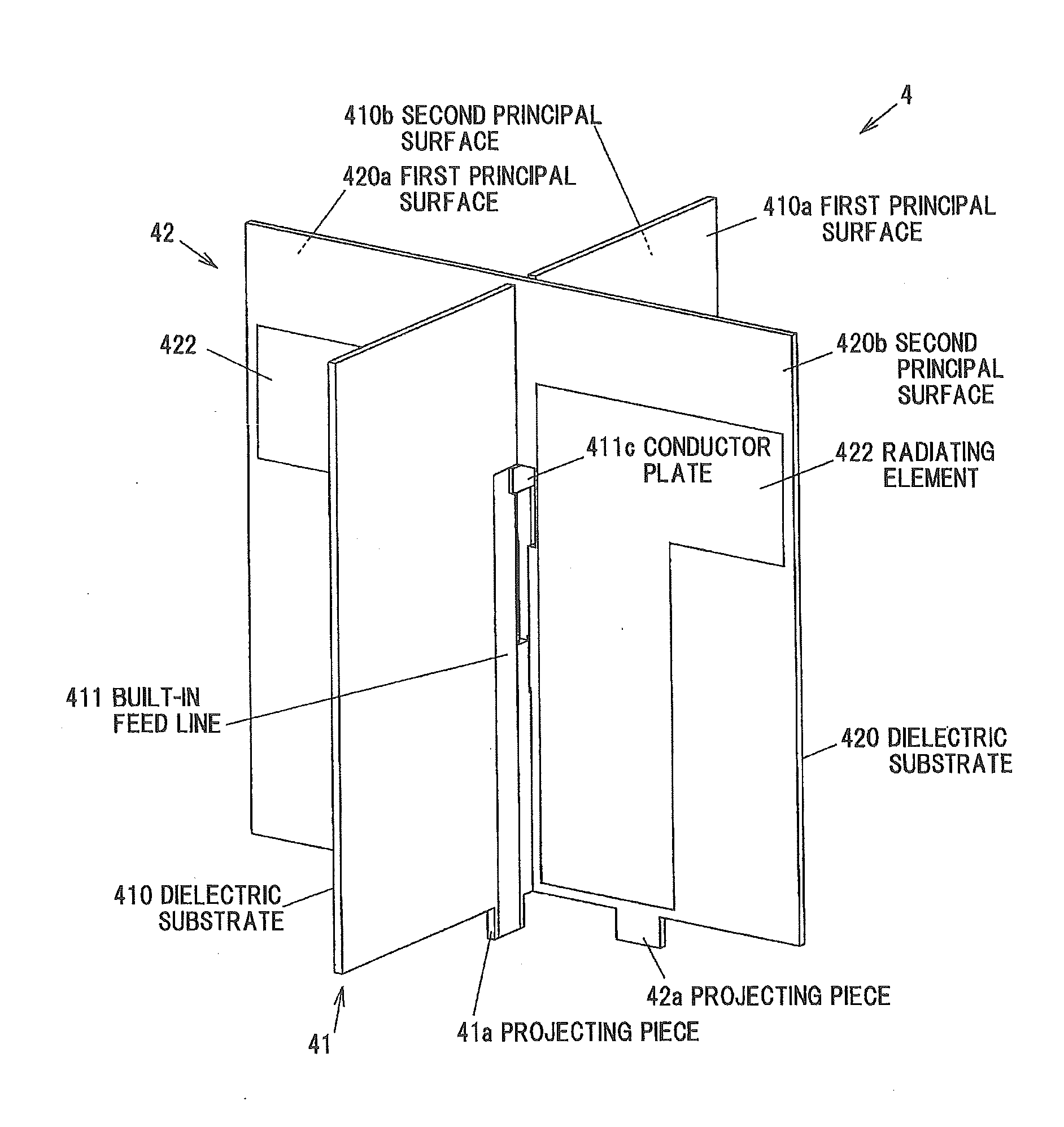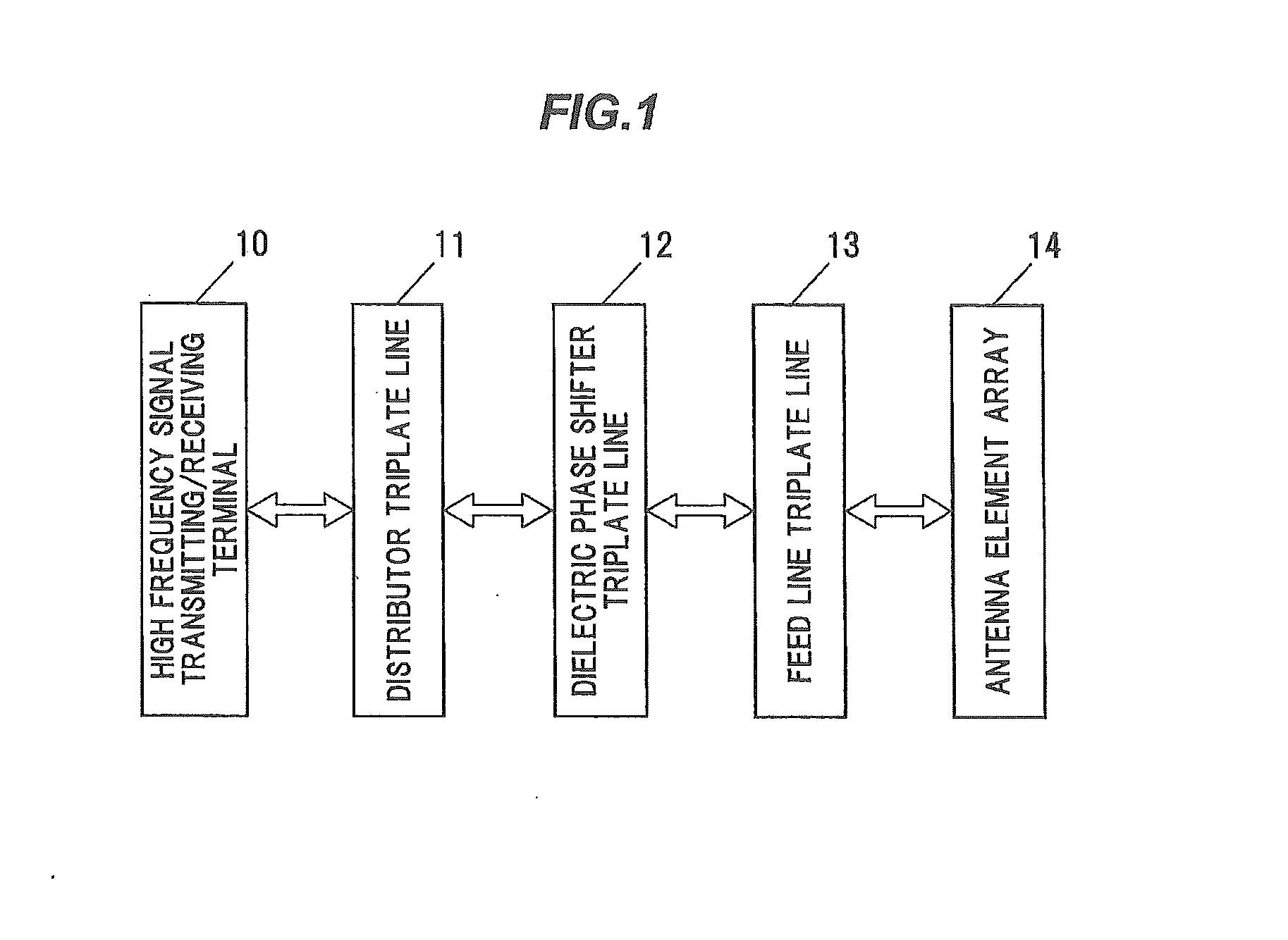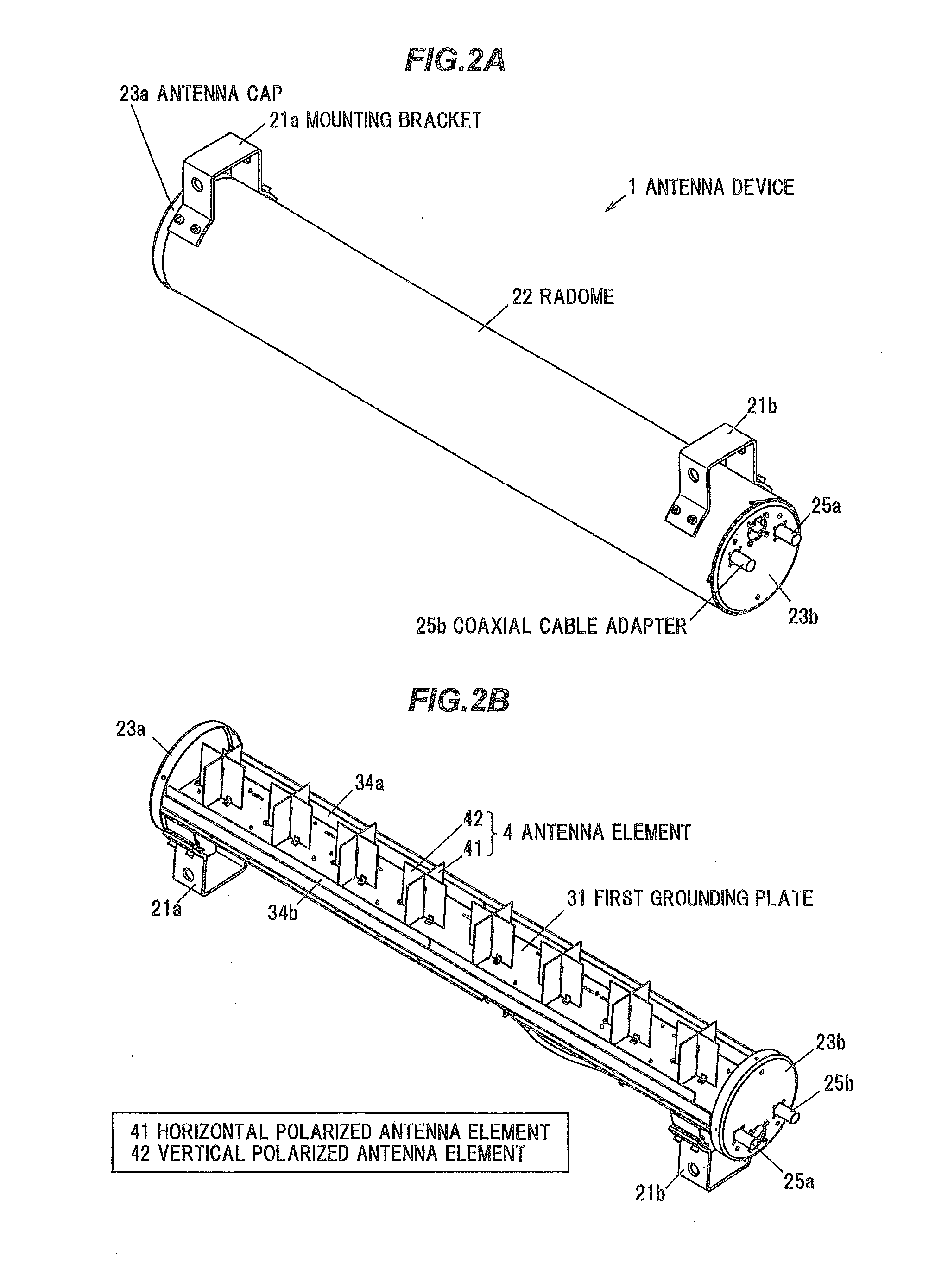Antenna device
a technology of antennas and antennas, applied in the direction of antennas, antenna feed intermediates, antenna details, etc., can solve the problems of high loss of high frequency signal transmission, achieve good spacing, facilitate matching output impedance, and stabilize impedance
- Summary
- Abstract
- Description
- Claims
- Application Information
AI Technical Summary
Benefits of technology
Problems solved by technology
Method used
Image
Examples
Embodiment Construction
[0038]FIG. 1 is a block diagram showing a schematic configuration of an antenna device 1 in an embodiment according to the present invention.
[0039]This antenna device 1 is used as a mobile phone base station antenna device, for example, and is configured as including a high frequency signal transmitting or receiving terminal 10, a distributor the triplate line 11, a dielectric phase shifter the triplate line 12, a feed line the triplate line 13, and an antenna element array 14 with a plurality of antenna elements arranged in an array.
[0040]When excitation power depending on a high frequency transmission signal is input to the high frequency signal transmitting or receiving terminal 10, the excitation power is distributed by the distributor the triplate line 11. The excitation power distributed is imparted with a specified amount of phase shift by the respective corresponding the dielectric phase shifter the triplate line 12, and is input to the respective corresponding feed line the...
PUM
 Login to View More
Login to View More Abstract
Description
Claims
Application Information
 Login to View More
Login to View More - R&D
- Intellectual Property
- Life Sciences
- Materials
- Tech Scout
- Unparalleled Data Quality
- Higher Quality Content
- 60% Fewer Hallucinations
Browse by: Latest US Patents, China's latest patents, Technical Efficacy Thesaurus, Application Domain, Technology Topic, Popular Technical Reports.
© 2025 PatSnap. All rights reserved.Legal|Privacy policy|Modern Slavery Act Transparency Statement|Sitemap|About US| Contact US: help@patsnap.com



